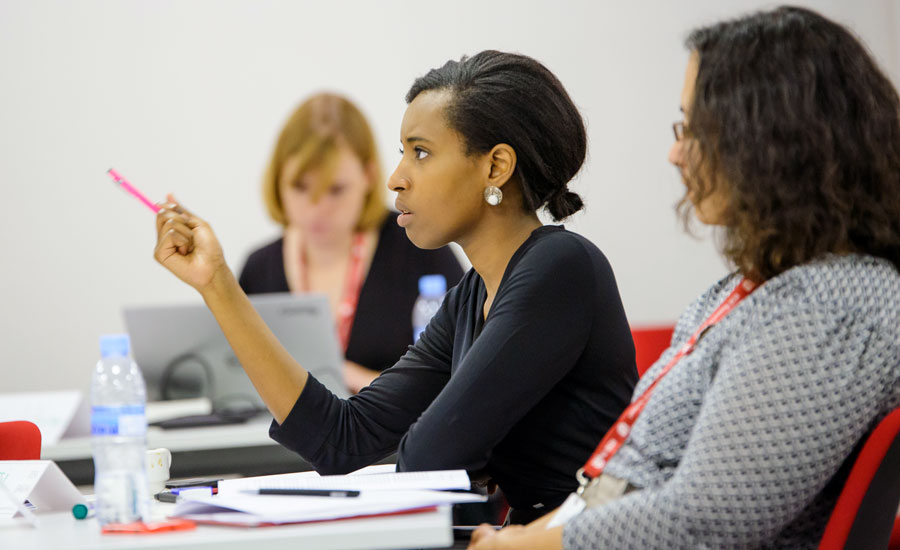Stories
Boardroom Parity
Boards of directors around the globe remain overwhelmingly male. Why?
March 9, 2018

With more women than ever in the global workforce, why are there still so few who sit on boards of directors? And what can be done?
As with so many other questions related to gender equality, there are no easy answers. And many of the policies that have been used to strengthen female representation on boards fail to address the fundamental issue of why women are so scarce in the pipeline of talent that feeds into the boardroom.
“There has been progress in some of the dimensions of discrimination and bias,” says Prof. Sebastian Reiche. “But it’s not sufficient.”
Discouraging Numbers
The numbers speak for themselves. While women account for about half of the workforce, on a global level just under 15% of board members are women, according to a Credit Suisse report. Europe performs significantly better than the international average: women represent 47% of board members in Norway, and 34% in both France and Sweden. In the U.S., about 17% of boards are women.
New research by Prof. Nuria Chinchilla, Carmina Roca and Rafael-Pich Aguilera Women and Leadership Chair, showed that women’s representation on the boards of listed companies in Spain climbed to 19% of total board seats during 2017. While that’s an improvement, “The presence of women on publicly traded Spanish companies falls far short of parity,” the report noted.
That’s not to say that things aren’t changing. They are. A decade ago, most boards had single-digit representation of women; many had none at all.
But still progress has been slow. And even as the aggregate numbers for women on boards has inched up, in many countries the number of executive directors – those who hold top positions within the company – has remained stagnant.
This is at a time when occupying a board seat is more crucial than ever. Whereas as in the past boards were mainly focused on governance, they are increasingly taking part in strategy, talent development and relations with shareholders. Many are now eager to be seen as active participants in the life of a company.
What Different Countries are Doing
So what have countries like Norway done? Particularly in Europe, the policy response has been to set quotas, most of which are non-binding, for women. Norway’s is 40%; Spain’s is 30% by the year 2020; the U.K. recommends 25%.
But quota systems are far from perfect, and carry the risk that lesser qualified women will be named to boards to meet the numbers, or that a reduced number of women will serve on multiple boards. Major economies like the U.S., China and Japan have resisted setting fixed numbers.
And the quotas don’t address the underlying issue that women stumble on the path to top leadership. Says Florentina Totth, segment and strategic clients vice president for European operations of Schneider Electric: “Something happens the first time companies start promoting. We lose women. The question is why?”
For Totth and Prof. Reiche, one of the main causes is unconscious bias – the judgments and perceptions we make about people without even being aware of them. Those tend to favor men when it comes to assigning high-profile projects and core responsibilities, to assessing skillsets and to rewarding attitudes at work.
What Companies and Women Can Do
Unconscious biases must be addressed at every stage: from external recruitment processes that exclude details such as name and age, through to internal promotion processes to the highest levels.
And top management must take the lead. Diversity and inclusion can’t be considered as a topic for the occasional human resources training session. Rather, the highest of leaders have to show they are dedicated to this.
Women themselves must make advancement a priority. “You have to dedicate time to this,” says Prof. Chinchilla, by networking, by finding a sponsor within the company who truly believes in you, and by finding allies in other women.
Only then can companies move beyond diversity into the sort of inclusion that produces parity in the boardroom. “Diversity in itself is not enough,” says Schneider Electric’s Totth. “We need to add inclusion. Inclusion makes diversity work.”


